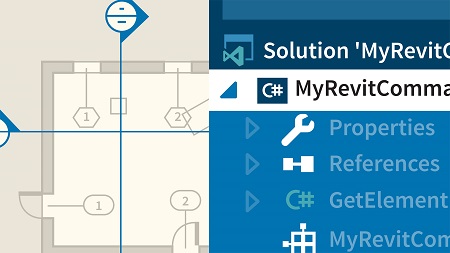
English | MP4 | AVC 1280×720 | AAC 48KHz 2ch | 3h 33m | 704 MB
Autodesk Revit is a powerful BIM platform, but it can be automated, customized, and expanded even further with plugins. With the Revit Application Programming Interface (API) and an understanding of C#, any motivated Revit user, BIM manager, architect, or engineer can create their own custom plugins. This training course starts with an overview of the plugin development workflow, using a simple example that retrieves an element ID. Once you know how to create commands and compile and debug the plugin code, instructor Jeremy Graham shows you how to work with elements (aka Revit families). Learn how to create elements, filter elements, and get and set element parameters. Then find out how to edit element geometry through code—binding intersections and projecting arrays—and automate common tasks related to views and sheets. Finally, Jeremy shows an advanced way to execute your commands with custom user interfaces known as external applications.
Topics include:
- Setting up the Revit API in Visual Studio
- Creating commands
- Compiling and debugging code
- Creating elements
- Editing element parameters
- Editing element geometry
- Automating element-related tasks
- Creating external applications to execute plugins
Table of Contents
1 Getting started
2 What you should know
3 Using the exercise files
4 The Revit API
5 Viewing the Revit API
6 Setting up Visual Studio
7 Adding the API
8 The IExternalCommand
9 Creating a command
10 Accessing the application
11 Selecting elements
12 Registering add-ins
13 Compiling the code
14 Debugging
15 Classifying elements
16 Retrieving element information
17 FilteredElementCollector
18 Creating a collector
19 Transactions
20 Modifying elements
21 Creating families
22 Querying FilteredElementCollector
23 Creating line-based elements
24 Creating loop elements
25 Get parameter
26 Parameter values
27 Element locations
28 Editing methods
29 Revit geometry basics
30 Traversing geometry
31 Intersecting geometry
32 Projecting rays
33 Views
34 Filters
35 Tagging elements
36 Sheets
37 Placing views
38 External applications
39 Creating an IExternalApplication
40 Customizing the user interface
41 Adding icons
42 DBApplication and events
43 Registering the event
44 Next steps
Resolve the captcha to access the links!